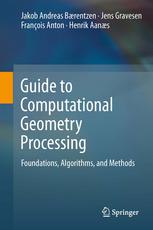

Most ebook files are in PDF format, so you can easily read them using various software such as Foxit Reader or directly on the Google Chrome browser.
Some ebook files are released by publishers in other formats such as .awz, .mobi, .epub, .fb2, etc. You may need to install specific software to read these formats on mobile/PC, such as Calibre.
Please read the tutorial at this link: https://ebookbell.com/faq
We offer FREE conversion to the popular formats you request; however, this may take some time. Therefore, right after payment, please email us, and we will try to provide the service as quickly as possible.
For some exceptional file formats or broken links (if any), please refrain from opening any disputes. Instead, email us first, and we will try to assist within a maximum of 6 hours.
EbookBell Team

5.0
18 reviewsThis book reviews the algorithms for processing geometric data, with a practical focus on important techniques not covered by traditional courses on computer vision and computer graphics. Features: presents an overview of the underlying mathematical theory, covering vector spaces, metric space, affine spaces, differential geometry, and finite difference methods for derivatives and differential equations; reviews geometry representations, including polygonal meshes, splines, and subdivision surfaces; examines techniques for computing curvature from polygonal meshes; describes algorithms for mesh smoothing, mesh parametrization, and mesh optimization and simplification; discusses point location databases and convex hulls of point sets; investigates the reconstruction of triangle meshes from point clouds, including methods for registration of point clouds and surface reconstruction; provides additional material at a supplementary website; includes self-study exercises throughout the text.